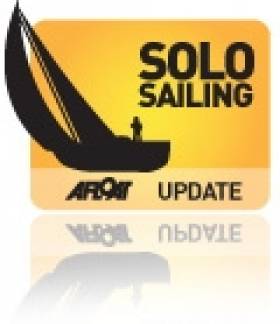Displaying items by tag: Plas Heli
#solosailing – This Sunday, 14 Corinthian sailors will set sail from Plas Heli, Pwllheli for Baltimore, south west Ireland. These single-handed boats of between 20 and 30 feet long are taking part in the Jester Baltimore Challenge; the course will take them around the notorious Fastnet Rock.
The Challenge is all about personal endeavor and self-reliance. It is a challenge for Corinthian sailors that involves the highest standards of amateur sportsmanship. To compete participants must be over 18, the length of the boat is less than 30 feet and each sailor signs a pledge accepting full responsibility for all their choices!
The longest Jester Challenge takes place every four years when sailors sail across the Atlantic from Plymouth to Newport, Rhode Island, about 3,500 miles. The Jester Baltimore Challenge is a shorter preparation event, covering 250 miles where the Jesters will join the Baltimore Pirate Festival before sailing another 250 miles, or more, returning to their home ports. In around a fortnight they can complete the course, enjoy the Festival and be back in time for work.
Since its inception the Jester Baltimore Challenge has launched from Plymouth, but Pwllheli sailor, Roger Fitzgerald, who has sailed every Jester Challenge since 2006 covering over 22,000 miles at sea, saw an opportunity to launch some boats at Pwllheli. The distance between Pwllheli and Baltimore is the same as from Plymouth to Baltimore but Welsh, Scottish and Irish sailors had the added challenge of sailing to Plymouth for the start. 3 local boats started from Pwllheli in the 2013 Challenge. This year a positive flotilla of 14 boats will be single-handedly sailed from Pwllheli to join the Plymouth fleet on route to Baltimore.
Roger Fitzgerald said: "As we've seen the growth in the numbers of boats starting at Pwllheli in the past two years we're hoping that more northern sailors will be attracted to this unique challenge. Pwllheli has such a great backdrop to start our journey. When you've been at sea for many days, or in my case many months, the beauty of returning to Cardigan Bay is something for all sailors to treasure!"
Stephen Tudor, chairman of Plas Heli Cyf, the new Welsh National Sailing Academy in Pwllheli, said: "It's great to see these little boats using our new visitor pontoons and using the Academy as a base for their sail to Ireland. The courageous sailors are starting their own adventure where it will be just them and their small boats battling against the elements. We hope that we can give them a sendoff to remember!"























